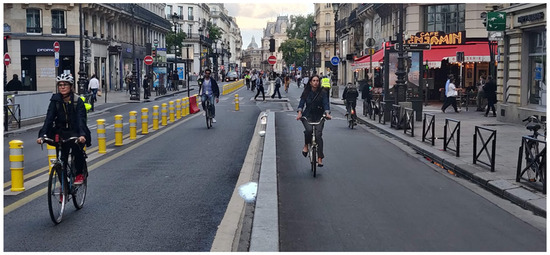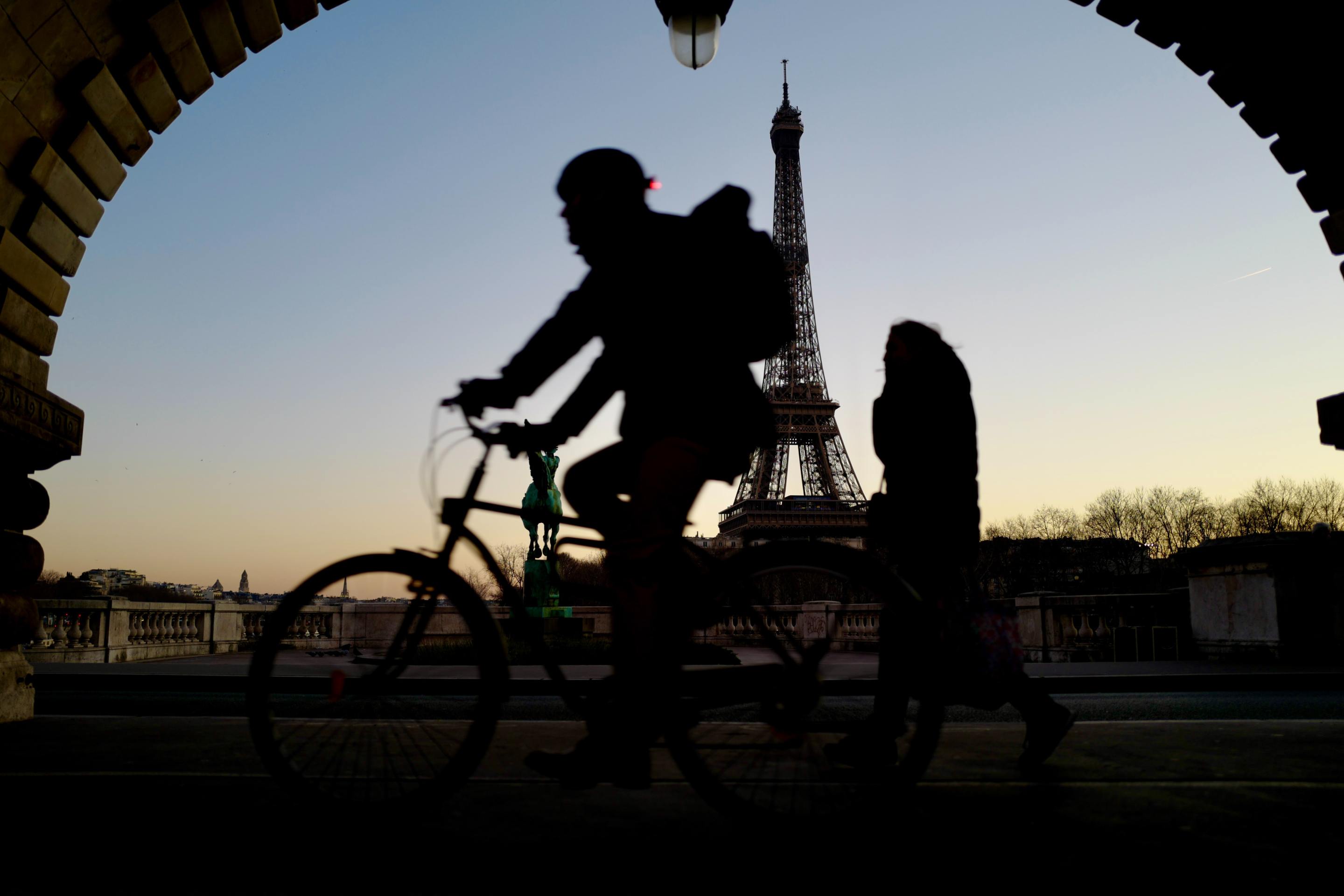Editor's note: This article is part of the “Cycling Through COVID-19” series from world-renowned cycling researchers Ralph Buehler and John Pucher and is published with permission from the authors. In this series, we’ll explore how 14 large cities around the world adjusted their cycling policies during the first years of the COVID-19 pandemic, as well as how those policies contrasted with their approach in the decades prior. In each, Buehler and Pucher also explore how each city’s plans for future investment in cycling infrastructure and programs have been impacted by the pandemic.
Read the rest of the articles in this series as they’re published here, or check out the full paper in Sustainability.
Paris is France’s capital and largest city, with 2.2 million inhabitants. It has not traditionally been a cycling-friendly city.
However, during the last 25 years, the city has promoted cycling with measures such as Vélib’, its innovative and trend-setting bikesharing program, which for many years was the largest bikesharing system in the world, with a total of 20,000 bicycles. Paris also greatly expanded its bikeway network from only 5 kilometers in 1995 to 293 kilometers in 2004, and then to 1038 kilometers in 2019. The network comprises mainly on-street bicycle lanes, but also more than 115 kilometers of protected bicycle lanes and over 80 kilometers of off-street paths.
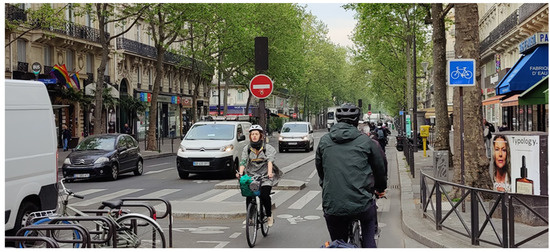
As the bikeway network expanded, cycling levels increased by 60 percent from 1997 to 2004, and then by 250 percent from 2004 to 2019. That is a six-fold increase over the entire 24-year period. The percentage of trips made by bicycle in Paris rose from 0.4 percent in 1991 to 1.4 percent in 2001 and 5.0 percent in 2019.
The city has also provided financial incentives for purchasing e-bikes and e-cargo bikes, paying one third of the purchase price for 85,000 bicycles between 2009 and 2022 (up to EUR 400 for e-bikes and EUR 600 for e-cargo bikes). In addition, the city has made efforts to reduce car travel in the city by increasing the cost of car parking and removing car-parking spaces, converting car travel lanes into bus-priority lanes, and banning motor vehicles from roadways along the embankments of the Seine River, which flows through the center of Paris.
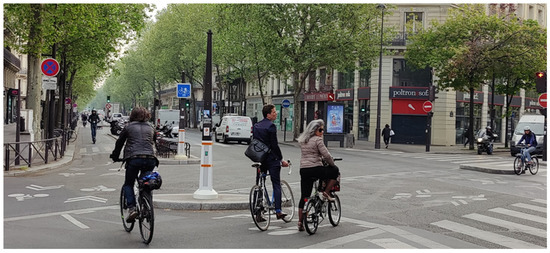
Cycling levels in Paris increased sharply during the pandemic, with cycling levels about 60 percent greater in 2020 and 2021 than in 2019. Vélib’ also saw strong increases in ridership, with 56 percent more trips in 2020 than in 2019. The number of trips made by electric-powered Vélib’ bicycles more than quadrupled between 2020 and 2019. Compared to cyclists in 2019, cyclists during the COVID-19 pandemic were more likely to be former public transport passengers, women, from Paris suburbs, commuters, and from lower income groups.
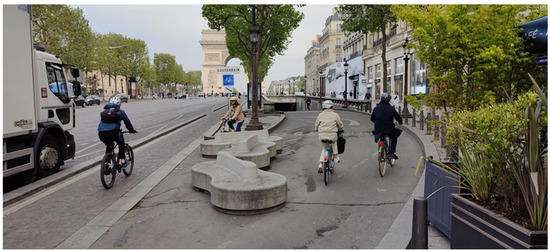
In response to the pandemic, the City of Paris installed 52 km of pop-up bicycle lanes that were separated from motorized traffic by concrete barriers. A recent analysis showed that the pop-up lanes connected crucial gaps in the city’s growing bicycle network—in particular linking the inner city to the periphery.
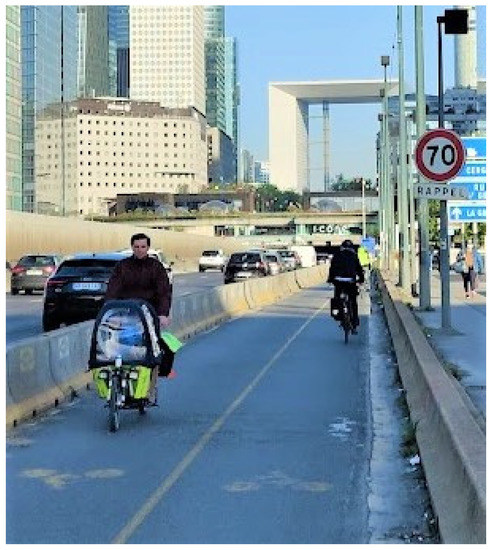
Moreover, compared to the bikeway network in 2019, pop-up bicycle lanes were more likely to be bi-directional and physically separated from motor-vehicle traffic.
In addition, Paris implemented many measures that had been planned prior to the pandemic. In May 2020, for example, the city transformed Rue de Rivoli from a road that prioritized car travel to a street for bicycles that restricts automobile access to one lane only. In August 2021, the city reduced the speed limit to 30 km/h on most city streets, which made then safer, lower-stress, and more comfortable for cycling.
In 2021, the City of Paris passed a new bicycle plan for the next five years, called “Paris 100 Percent Cyclable." As part of the plan, the City of Paris will make all pop-up bicycle lanes permanent.
By 2026, the city plans to build over 130 km of additional protected bicycle lanes, open over 390 km of one-way streets for motor vehicles to two-way bicycle traffic, and to add 130,000 new bicycle-parking spaces in public spaces. In total, the city plans to spend EUR 250 million on bicycle promotion between 2021 and 2026.
With the summer Olympic Games scheduled to take place in Paris in 2024, the city is aiming to significantly increase cycling.
